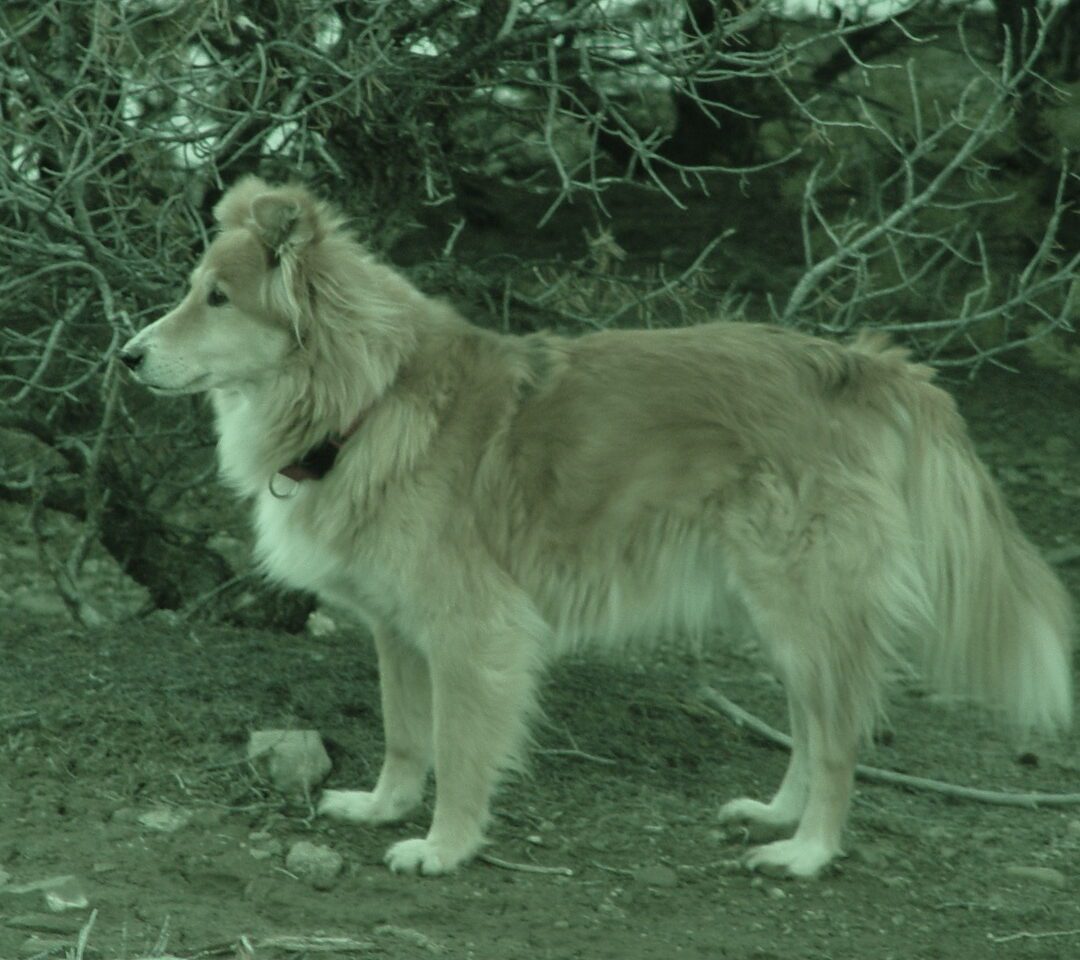“Lobo,” a contemporary “Collie Dog”
Seton’s first best seller, Wild Animals I Have Known, propelled him to fame and considerable wealth as a proverbial overnight success in December 1898. The following year The American Naturalist published a review in Vol. XXXIII on pages 666—668. I requested permission from the magazine (on November 17, 2020) to reprint this review but haven’t heard back. As I am sure you are anxious to catch up on what the reviewer had to say during this anniversary month, I am showing it here with all due credit. For greater ease of reading, I have added paragraph breaks. (Early editions of the book showed the author’s name as Ernest Seton Thompson.)
The popularity of Seton’s book of course brought out the gaslighters. Never one to waste a good controversy, Seton not only survived the controversy around his work, but went on to create ever more ambitious projects.
The author of the review below is identified only by initials: J.A.A.
The American Naturalist Gives An Opinion
“Wild Animals I Have Known.” 1 – This book is unique in conception and illustration, and the publishers have given it a daintiness of form quite in keeping with the delicacy of touch that marks its literary and artistic execution. The book is not only as pleasing to the eye as it is out of the ordinary in style of make-up, but is one of the most valuable contributions to animal psychology and biography that has yet appeared.
Mr. Thompson is not only a naturalist and an animal artist of very high attainments, but is master of a literary style that is at once graphic and fascinating, though doubtless much of the charm of the book is due to his sympathetic love of the wild animals he has come to know so intimately, and whose traits he is thus able to depict so successfully with both pen and brush. To him “animals are creatures with wants and feelings differing in degree only from our own” this being the case, “they surely have their rights.”
“Man has nothing that the animals have not at least a vestige of; the animals have nothing that man does not in some degree share.” These sentiments are the keynote of the book. His animals are treated as individual personalities, and through this individuality of treatment we get a deeper insight into the life history of the species than if, in the place of ” Lobo, the King of Currumpaw,” he had given us a long dissertation on the natural history of the wolf, or, in place of ” Raggylug, the Story of a Cottontail,” he had treated of the life history of cottontails in general.
The First Four of Eight Stories in the Book
The eight ” stories ” in this book treat of: (i) “1Lobo, the King of Currumpaw,” a famous wolf of the Currumpaw region of northern New Mexico, which for years, as leader of a pack of outlaws, evaded capture, meantime making heavy inroads upon the young calves, colts, and sheep of the ranchmen. His cunning, his heroism, and his pathetic ending are most effectively recounted.
(2) “Silverspot, the Story of a Crow,” purports to be the individual history of a crow that had his home in the neighborhood of Toronto, and which was distinguishable from other crows by an albinistic spot of white on the side of his head in front of the eye. (3) “Raggylug, the Story of a Cottontail Rabbit.” “Raggylug” was distinguishable from his fellows by a slit in one ear. (4) “Bingo, the Story of My Dog,” relates to a Collie dog, remarkable for his intelligence, strength, courage, and faithfulness to his master.
The Last Four Stories
(5) “The Springfield Fox” is a tale of the intelligence and cunning of a pair of foxes, and of the pathetic love of the mother fox for her unfortunate offspring. (6) “The Pacing Mustang ” gives the life of a wild black stallion of the Currumpaw region, renowned for his sagacity and endurance, which ends, like the other stories, in tragedy. “The fact that these stories are true is the reason why all are tragic. The life of a wild animal always has a tragic end,” says our author, for which statement there is a large amount of evidence.
(7) “Wully, the Story of a Yaller Dog,” is composite, relating to two mongrels raised as sheepdogs, which were faithful and efficient protectors of their flocks by day, and bloodthirsty, treacherous monsters at night, killing for mere pleasure not only sheep but other dogs, they leading double lives, like many a human monster. (8) “Redruff, the Story of a Don Valley Partridge,” is a real character, and his somewhat idealized career vividly epitomizes the experiences and traits of his tribe. Indeed, the author admits that in some of these stories the characters are pieced together of fragments relating to several individuals, yet no violence is rendered to the general truthfulness of the narration in giving to the incidents the unity of a single individuality.
It is evident that the author of Wild Animals I Have Known is a keen woodsman, as well as an accomplished artist and writer, and has given us a book that opens a new field to our vision—a book equally well adapted to young and old, and one which cannot fail to inspire interest in and kindness of feeling toward the beasts that are our kin.
J.A.A.
1Thompson, Ernest Seton. Wild Animals I Have Known, and 200 drawings. Being the Personal Histories of Lobo, Silverspot, Raggylug, Bingo, the Springfield Fox, the Pacing Mustang, Wully, and Redruff. New York, Charles Scribner’s Sons, i898. 8vo, 358 pp., 30 pls.

